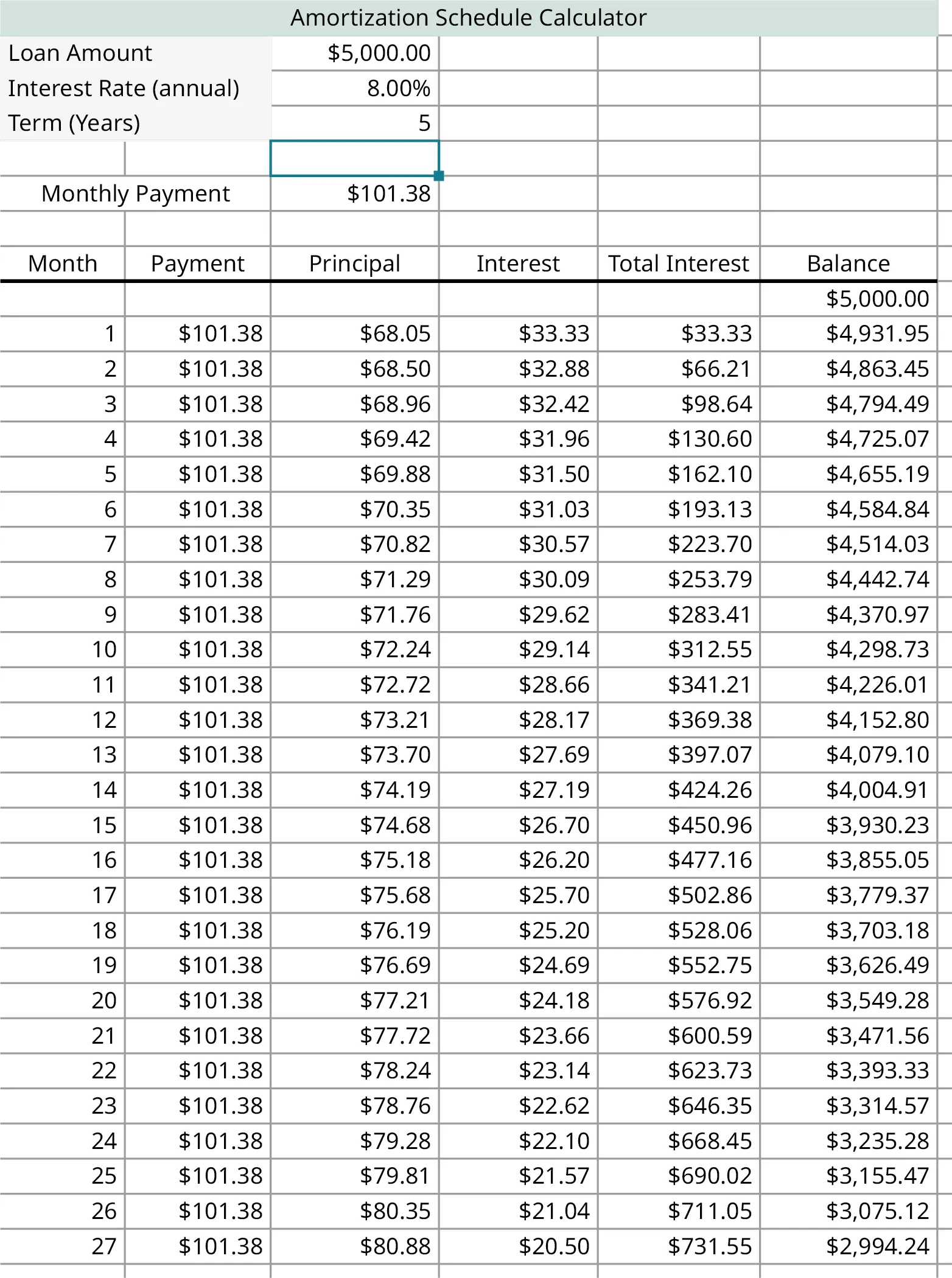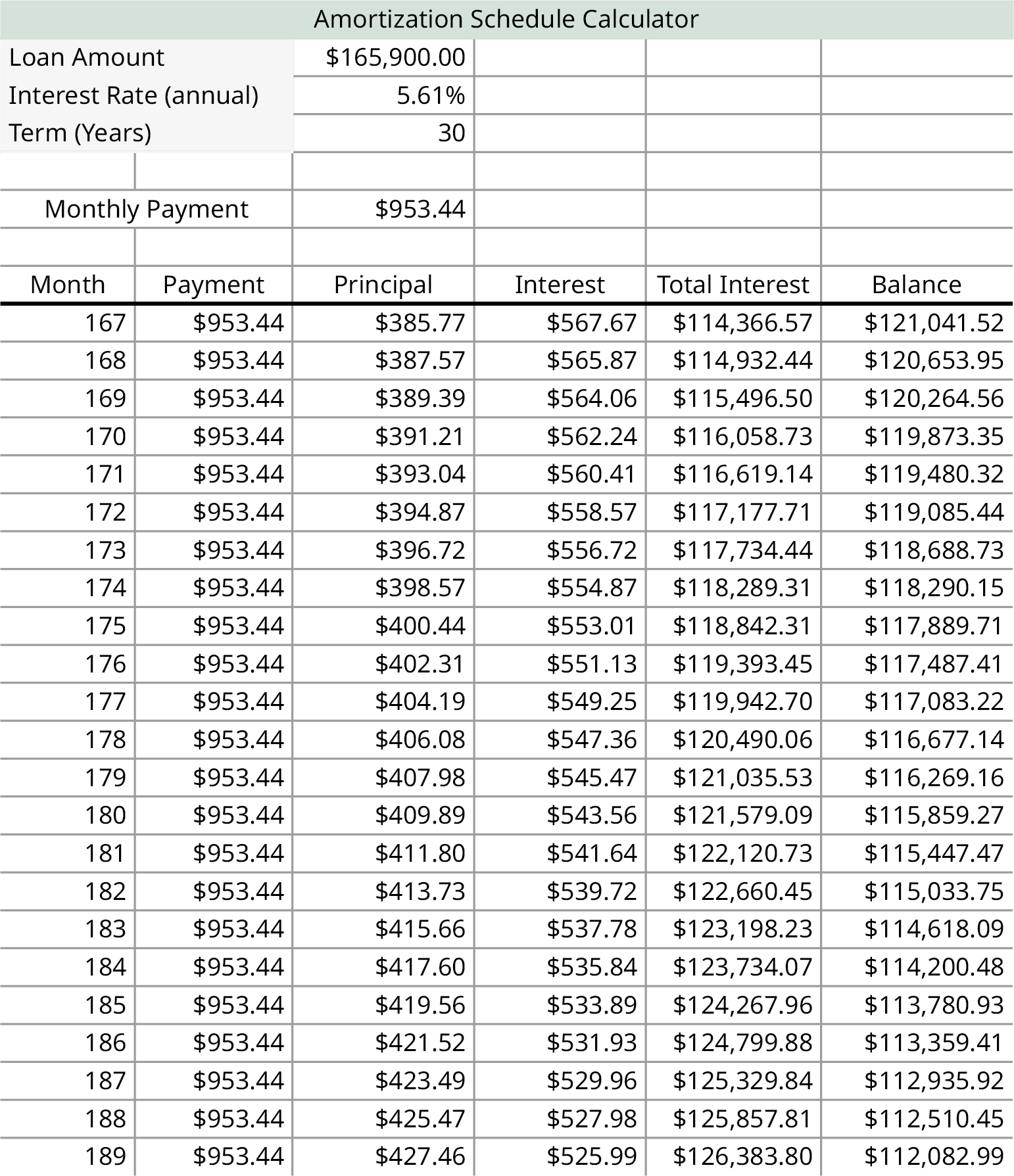Reading and Interpreting Amortization Tables
An amortization table or amortization schedule is a table outlining the repayment of a loan, detailing how payments are divided into principal and interest over the loan’s term. The schedule shows equal periodic payments and breaks down the specific allocation toward the interest, the reduction of the principal, and the remaining balance after each payment.
Mortgage payments usually stay consistent in amount, but over time, the portion that goes toward interest decreases while the amount that reduces the principal grows. This is a typical aspect of how an amortizing loan works.


- What is the interest rate?
- How much are the payments?
- How much of payment [latex]175[/latex] goes to principal?
- How much of payment [latex]180[/latex] goes to interest?
- What’s the remaining balance on the mortgage after payment [latex]170[/latex]?